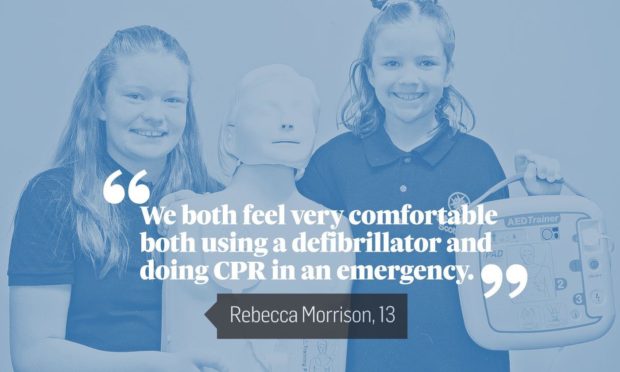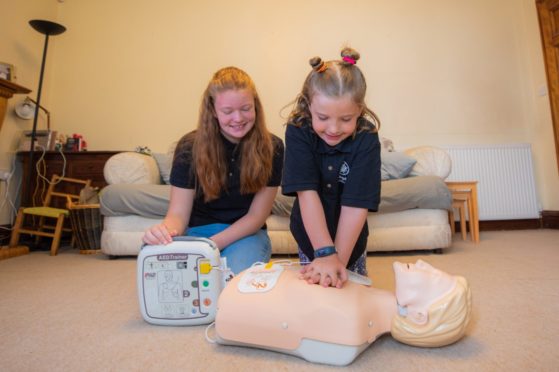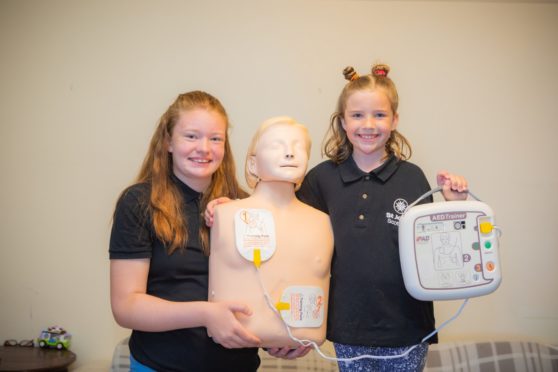Perth siblings Rebecca and Elizabeth Morrison are helping others become lifesavers with vital first aid training.
The schoolgirls, Rebecca, 13, and Elizabeth, 7, have been training others how to perform CPR and use a defibrillator with St John Scotland for around four years.
Their demonstration applies to adults and teenagers, with different techniques required for younger children and babies.
All of the Morrison family are first aid trained, with dad Ian a clinical lead in neurology at NHS Tayside while mum Susan is a former acute coronary care nurse and a registered CPR trainer.
While Elizabeth is only seven years old, she is already comfortable picking up the kit and helping out.
Even when younger kids don’t have the strength to deliver compressions on their own, knowing how to do it allows them to talk their families through how to help in an emergency.
Elizabeth, who attends Kinnoull Primary School, hopes to share her skills with her school friends.
She said: “I feel quite comfortable doing CPR. I like teaching people how to do it so that they know how to save other people’s lives.”
Older sister Rebecca gave lessons at her Kilgraston School a few years ago in an effort to give her classmates the confidence to help in an emergency.
A defibrillator was then installed at the school following her demonstration.
Rebecca’s friends were worried about learning CPR because they were scared of being in a situation where they needed to use it.
After Rebecca demonstrated how easy it was and explained it was better to be prepared in case an emergency happened, her friends couldn’t wait to learn.
Neither of the Perth siblings would hesitate to do first aid in an emergency.
Rebecca said: “We both feel very comfortable both using a defibrillator and doing CPR in an emergency.
“When I taught people in my class how to do it, they were all really willing to do it.
“They did have some questions but once they picked it up they found it really easy and they still remember it to this day which is really good.”
Performing CPR can result in broken ribs for the casualty, but Rebecca urges people not be put off by this.
“The one and only focus in that moment is saving their life so don’t be afraid of broken ribs. It won’t matter to them in the long run.”
Performing CPR on adults and teenagers
The Perth siblings have training CPR and defibrillator kits at home and have demonstrated how easy first aid is to do.
The demonstration applies to adults and teenagers, however we have provided the steps for doing CPR on younger children below.
Once you have checked the casualty’s airways and checked if they are unresponsive, it’s time to turn on the defibrillator.
The device does not require any formal training to use and provides verbal cues to follow all the way through.

It also tracks the casualty’s heart rhythm and will not shock unless it has to.
The defibrillator is most effective when used alongside CPR and the girls have demonstrated how to perform compressions correctly.
Rescue breaths are normally given to the casualty however this is not currently advised because of Covid-19.
Chest compressions should be done by interlocking your fingers and placing the heel of your hand on the lower half of the breastbone, in the centre of the casualty’s chest.
Press firmly down on the person’s chest and release and repeat this process at a rate of approximately 100 compressions per minutes.
This should be done until the patient responds or until emergency services arrive.











